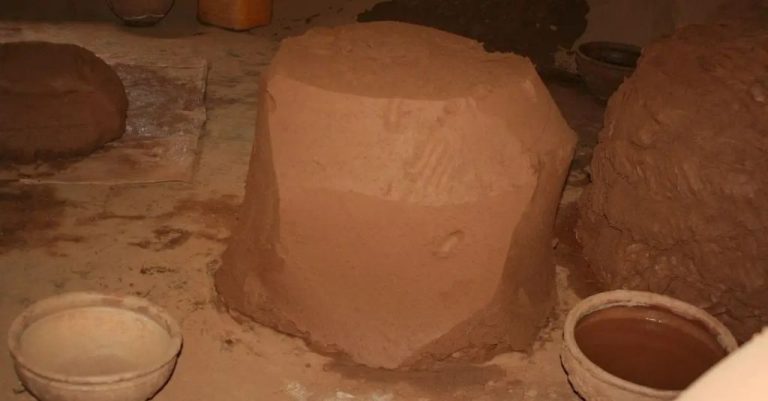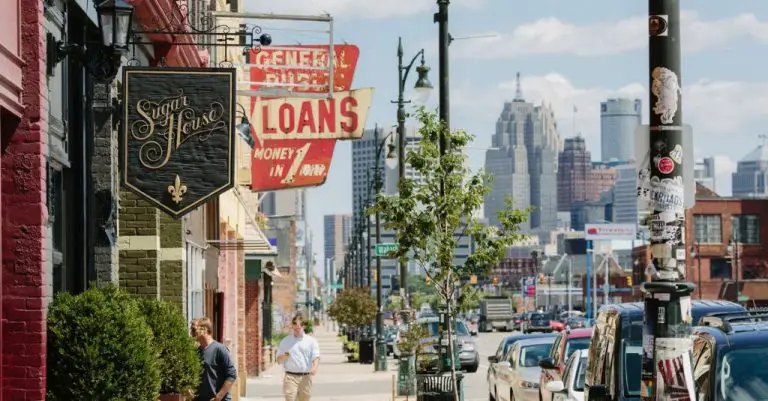How To Build A Traditional Clay Oven?
Traditional clay ovens, sometimes called pizza ovens or bread ovens, have been used for thousands of years to bake bread and cook food. Evidence of ancient clay ovens has been found in the Middle East, Egypt, and the Mediterranean dating back over 5,000 years. These simple but effective ovens use retained heat and radiant heat to produce delicious food with wood-fired flavors.
Cooking with a traditional clay oven has many benefits. The dense materials retain heat well once the oven is heated up, allowing for fast, consistent cooking. The dome shape radiates heat evenly over food. The intense dry heat helps create crisp crusts on bread and pizza. Cooking over a wood fire imparts a subtle smoky flavor. Clay ovens can reach much higher temperatures than home kitchen ovens, often over 700°F, which is ideal for cooking Neapolitan-style pizza in just minutes. Overall, clay ovens combine convenience and cooking performance for incredible results.
Building a traditional clay oven is a rewarding project that allows you to bake artisan bread and pizza at home. The process involves constructing a sturdy foundation, insulating layers, the oven floor, the oven dome, chimney and doorway. High-heat materials like fire bricks and clay mortar are used. Attention to detail is needed when shaping the dome and insulating properly. With some hard work and patience, you can create a beautiful, fully-functioning clay oven in your backyard.
Choosing a Location
When choosing where to build your traditional clay oven, there are a few key factors to consider:
Sunlight – Ideally, choose a spot that gets ample sunlight throughout the day. This allows the oven to fully heat up. South or southeast facing locations often work well.
Wind Protection – Shelter from strong winds will help the oven retain heat and bake more evenly. Consider building near the house, trees, or using windbreaks.
Proximity – Pick a spot close to your kitchen or outdoor dining area for convenience. Keep it accessible but out of high-traffic zones.
Space – Allow adequate room all around the oven for good airflow and access. An area about 8 ft x 8 ft is a good starting point.
Surface – Choose a level, stable surface like concrete, pavers, or well-packed soil. This prevents cracking or sinking of the foundation.
Before building, sketch the oven layout and dimensions in the planned location. This helps visualize spacing and traffic flow.
Sourcing Materials
The key materials you’ll need to source for building a traditional clay oven are clay, aggregate, and insulation materials like straw, sand, and bricks. Here are some guidelines on selecting appropriate materials:
Clay
Opt for natural, untreated clay that is free of contaminants. Avoid clay with high salt or organic content, which can cause cracking. The best clay for ovens has a high silica content, which helps withstand heat. Try to find clay native to your area. Test clay samples for plasticity and workability.
Aggregate
Aggregate like crushed bricks, gravel, or sand mixed with clay creates stability and airflow. Use a coarse sharp sand or fine gravel aggregate. Generally a mix ratio of 4 parts clay to 1 part aggregate works well.
Insulation
Materials like straw, dried animal manure, perlite, vermiculite or sand can provide insulation. Straw is commonly used – it burns out when firing the oven, creating air pockets. Sand can also be used between double layers of bricks. Ensure insulation materials are dry.
In addition to clay, aggregate and insulation, other useful materials are rebar for reinforcement and standard bricks for layers. Be sure to source enough materials for proper thickness in each oven layer.
Foundation
The foundation is an important first step in building a traditional clay oven, as it provides the solid base upon which the rest of the oven structure will be built.
Begin by digging out a roughly circular area, at least 4 feet wide and 1 foot deep. The size can vary depending on how large you want your oven to be, but make sure to leave sufficient space to work.
Next, fill in the base with 4-6 inches of sand or fine gravel and pack it down firmly. This layer will provide drainage under the oven floor. Level and smooth out the surface, removing any bumps or ridges. The foundation should be flat and even.
Take your time preparing the foundation, as any flaws at this stage will transfer through the rest of the build. The foundation needs to fully support the weight of the completed oven without shifting or settling over time. With a proper foundation in place, you can move on to building up the rest of the oven.
Insulation Layer
The insulation layer is a critical component for maintaining the high temperatures needed for cooking inside the oven. This layer goes on top of the foundation and below the oven floor. The insulation is made up of clay, aggregate like sand or crushed brick, and straw.
A good insulation layer is about 12-18 inches thick. It should be built up in layers or “lifts” of about 3 inches each. Here are some guidelines for the mix:
- Clay – 25-30% of total volume
- Sand or aggregate – 60-70% of total volume
- Straw – 8-12% of total volume
The straw helps provide air pockets, which improve the insulating properties. Each lift should be packed down firmly before adding the next layer. Use a tamper to compress the material. The successive compression helps meld the layers together into a cohesive, solid mass.
Take care that the insulation remains thick and consistent around the entire perimeter. The insulation layer traps heat for more efficient cooking and baking. Proper insulation will allow the oven to reach and maintain high temperatures.
Oven Floor
The oven floor is a key component in building a traditional clay oven, as it needs to withstand high temperatures. Most clay oven floors are made of concrete or firebricks laid on top of a gravel base.
If using concrete, construct a wooden form on top of the insulation layer to hold the concrete in place while it cures. Mix the concrete according to package directions, then pour it into the form. Use a trowel to spread and smooth the concrete into an even layer 2-4 inches thick. Allow the concrete to fully cure for at least 1 week before building the rest of the oven.
For a brick floor, lay down a bed of sand or gravel at least 6 inches deep to create a level, durable surface. Arrange the firebricks tightly together in the shape of your oven floor, using traditional bricklaying techniques. Use a rubber mallet to tap the bricks into place. Fill any gaps with high-temperature mortar or clay slip. Allow mortar to fully cure before using the oven.
The oven floor should have a smooth, flat surface without large cracks or uneven areas. This allows for efficient heat transfer into the oven dome and prevents hot spots. A well-constructed floor is critical for proper oven performance and longevity.
Oven Dome
The dome is one of the most important parts of building a traditional clay oven. This curved structure helps retain and radiate heat back down onto the oven floor where you will cook your pizzas and breads.
To shape the dome, you will need to construct a form using damp sand. Mound the sand into a dome shape, making sure it is the desired size for your oven. It should be around 2 feet high at the center. Next, wet the sand form to compact it and help it hold its shape.
Once your sand form is built, you can lay bricks or lumps of clay around it to build the actual oven dome. Make sure to stagger the bricks so they lock together and leave no gaps. As you lay each row, use clay slip (a mix of clay and water) like mortar to hold the bricks in place. Let each layer dry before adding the next row.
Continue building up layers until the dome is complete. The opening of the dome should be around 16 inches wide. This is where you will add the oven door later. For added insulation, you can mix sawdust, perlite, or vermiculite into the clay as you build.
After the clay has dried fully, carefully remove the sand form through the oven entrance. Then smooth the inner dome surface using a wet sponge or piece of dowel. Allow the clay to cure fully before lighting the first fire in your oven.
Door
The door is a crucial component of the oven that regulates airflow and retains heat. Careful planning is required when cutting the doorway opening and installing the door.
When cutting the doorway, make sure to leave at least 2 inches of insulation material around the opening. This prevents cracking. Use a masonry blade on a circular saw to cut the opening. Ensure the opening is slightly smaller than your oven door size.
For the door itself, a heavy cast iron or steel door works best. The door should have a handle and latch. Before installing, seal the edges with fireproof material like wood ash mortar. Place the door in the opening and secure it with masonry anchors. Pack more insulation around the edges to prevent air leaks.
Having a tight door seal is critical for controlling airflow and maintaining high temperatures inside your oven. Take time to properly install the door and test its seal before using the oven.
Chimney
The chimney is a crucial part of the oven for controlling airflow and allowing smoke to escape. Build the chimney upwards from the top of the dome using bricks, stones, or other heat-resistant materials.
Mortar or cob (clay, sand, straw) can be used to seal gaps between chimney materials. Apply mortar generously between layers, filling any cracks or crevices. Cob is a traditional material for earthen ovens that can withstand high heat. Knead together clay soil, sand, and straw before pressing cob between chimney layers.
Build the chimney tall enough so smoke can properly vent. A height of at least 5-6 feet works well. The interior chimney diameter should be around 8-12 inches. Make sure the chimney opening aligns with the oven dome opening to allow proper airflow.
Cap the top of the chimney to keep out rain. This could be a clay/cob lid, wooden cover, or metal cap. The cap should overhang the chimney to help protect from weather.
Finishing
The final step is finishing and decorating your traditional clay oven. After the clay mortar has dried completely, it’s time for the first firing process. This helps harden and strengthen the clay. Build a small fire inside the oven and let it burn for several hours. Start with a low temperature fire and gradually increase the heat over time.
Once cooled, check for any cracks that may have formed and seal them with more clay mortar. Apply a clay slip mixture over the exterior dome and surfaces to seal and protect the clay. You can decorate the outside creatively with mosaic tiles, stones, or paint.
Add a coat of lime plaster for a smooth finish. Lime plaster will slowly absorb carbon dioxide over time and become more resilient. Apply natural beeswax on the interior dome and floor to help seal in moisture and provide a food-safe waterproof barrier.
Perform a second higher temperature firing to fully harden the clay and complete the finishing process. Your traditional clay oven is now ready for baking!



